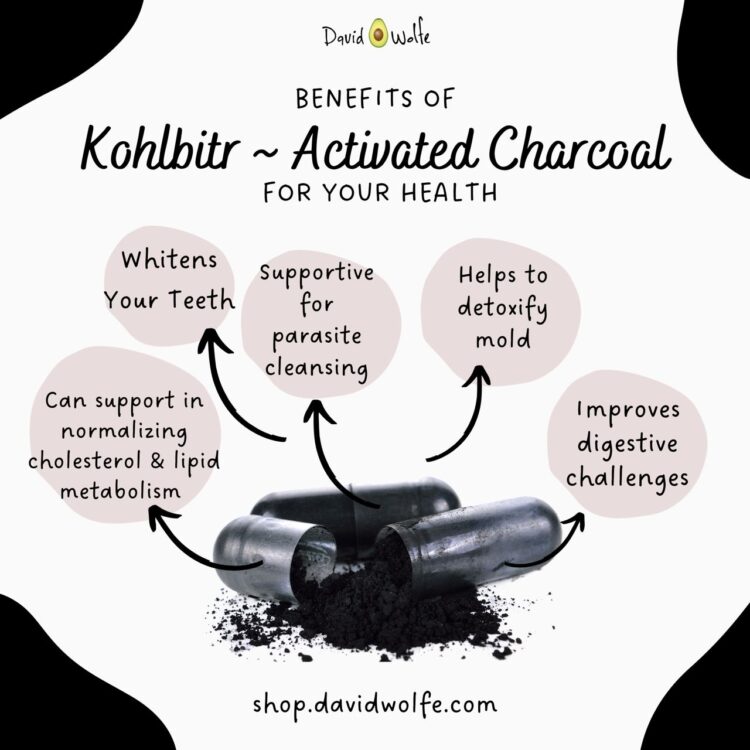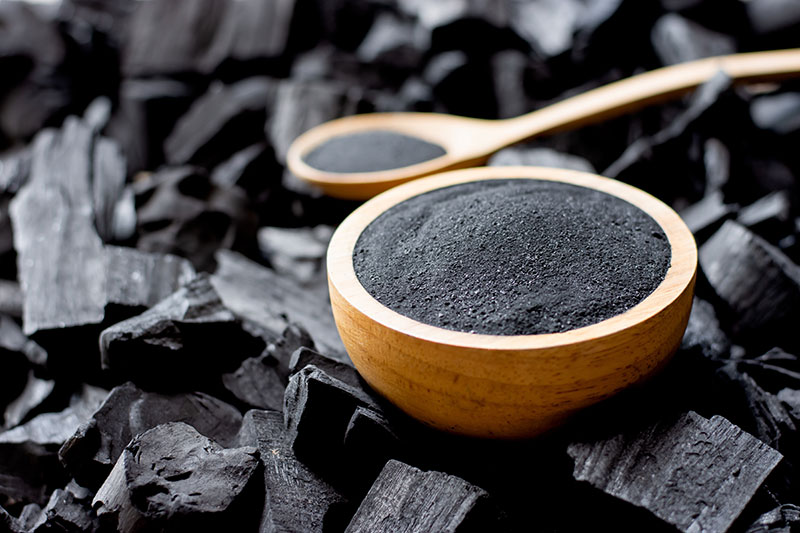Kohlbitr. The name reminds us of ancient cultures, as it should. The word kohlbitr comes from the Nordic tradition and refers to the person who sat by the hearth and tended the fire.
But there's so much more to the story.
Who Was The Kohlbitr?
Traditionally, the weakest person in the family was put to work inside the house, rather than have to go outside and brave the elements of the Northern climes.
Tending the fire, of course, was a very important responsibility. Naturally, working by the fire, the kohlbitr ingested coal -- whether munching on charcoal on purpose, or getting the dust on food and in drinks.
Activated charcoal was seen by the Scandinavian people as an agent of transformation.
Over time, the kohlbitr was transformed from the weakest in the family to the most resilient, able then to face the fierce weather and harsh winters with fortitude.
Wow. Wouldn't you like to be part of that story? Well, in a way you can!
Listen to David Avocado Wolfe Tell The Story:
What Is Kohlbitr Activated Charcoal?
Named for the transformative nature of activated charcoal, Kohlbitr Activated Charcoal brings that ancient resilience to your doorstep.
Many companies offer activated charcoal (AC). And because AC is a top longevity substance, it's good that people have access to the product.
Better yet, why not have access to the very best activated charcoal out there?
Kohlbitr Activated Charcoal begins with premium grade charcoal. And every batch is fully quality tested. So we don't rely on first-batch testing, and then assume everything down the line is acceptable. Every batch needs to meet David Wolfe's high standards for quality.
Because health matters and quality matters. David Wolfe uses all the products he sells. Of course he wants the best, and the best for you, too.
Here's more on Quality:
- Non-Plantation, Non-Irradiation, Non-GMO
- No pesticides, no hidden ingredients, no flow agents *
- Pesticide Free, Accelerant Free, Allergen Free
- Wildcrafted and Vegan

Benefits of a high quality activated charcoal, like Kohlbitr:
1. Longevity
Probably the most striking benefit is this one. Consuming activated charcoal increases lifespan up to 43%. BAM! Through the action of enterosorption, AC delays the onset of age-related decline of internal organs. Similar research is on-going, but by supporting digestion and detoxification pathways, it makes sense that activated charcoal supports a longer life. (1)
2. Detoxification
This benefit of activated charcoal helps explain its longevity trait. A clean body is a healthy body! As David Wolfe has noted, though, the waste products of metabolism account for a lot of the body's toxic buildup. Never mind added environmental toxins.
So what's a body to do?
Take Kohlbitr Activated Charcoal!
AC latches onto toxins and metabolic waste products (that's your own body's waste, which is a byproduct of living!) and moves it out. A 2023 study investigated whether activate charcoal could benefit patients with chronic kidney disease (CKD), specifically for those with end-stage renal disease. A symptom of CKD is intestinal permeability. This means that foods you eat or, in this case, fluid in your body, can get into your blood. Put simply, you don't want urea mixing with your blood! So activated charcoal helps latch onto those natural body toxins and eliminate them. (2)
3. Digestive Issues
Sure, activated charcoal helps with acute food and alcohol poisoning. Any hospital can tell you. (3)
At the same time, AC also helps with keeping environmental toxins, like pesticides and herbicides, from entering your body. You can often feel the digestive benefits, even if you can't see what's going on. For example, if you eat a heavy meal and experience a lot of gas and bloating, Kohlbitr can help. We keep the capsules in the medicine cabinet for any upset stomach.
Please be sure to take with plenty of water! If you or a loved one is not able to hold down liquids, then use with caution and watch for signs of constipation.

4. Balance Cholesterol
A team of scientists took an interest in activated charcoal many years ago, yet no studies have disputed their findings. First, they wanted to see if AC could alter the ratio of HDL and LDL cholesterol. They found that it reduces LDL 25% and 41% (depending on dose) and increases HDL up to 8%. That makes for a great improvement on the ratio! (4)
Then they compared activated charcoal with bran fiber and the cholesterol-reducing drug Cholestyramine. AC out-performed the bran fiber significantly and returned numbers almost as good as the drug, without the side effects. (5)
Cholestyramine may cause severe stomach pain, blood in urine, and unusual bleeding. (6) On the other hand, activated charcoal may cause constipation, heartburn, or dehydration. And more water will help against all three, so really the side effects are much less in comparison. (7)
For more tips on reducing cholesterol, click here!
5. Filter
Let's come back to the beginning - longevity. If you don't use a filter, then you are the filter. So using charcoal to filter drinking water or capture toxins from your food supply before you consume it is the winning strategy.
Activated charcoal takes the next step. What you can't capture through prevention, you can filter out with activated charcoal.
Yes, it's best to keep the toxins out in the first place, rather than rely on detoxification technologies later. With AC on the job, though, you can almost have your cake and eat it, too. While there is no pill for every ill, Kohlbitr Activated Charcoal comes close.
Charcoal adsorbs, which means it captures and clings to toxins in the body. If you squeeze a sponge, everything that it had absorbed just comes right back out. Well, there's no squeezing the charcoal sponge. What it's captured, it carries... all the way out. (8)
Want to Experience Iceland?
Check Out 11:11 Iceland - David Avocado Wolfe's Documentary on the unfiltered majesty of this Nordic country.
* Average encapsulated charcoal material is 350mg. Some batches are slightly more, and some less as each batch is manually achieved without flow agents such as magnesium stearate, citric acid, PEG, etc. Any encapsulated activated charcoal product—where the outside of the capsule itself is not covered with a thin layer of charcoal material—is using flow agents.





